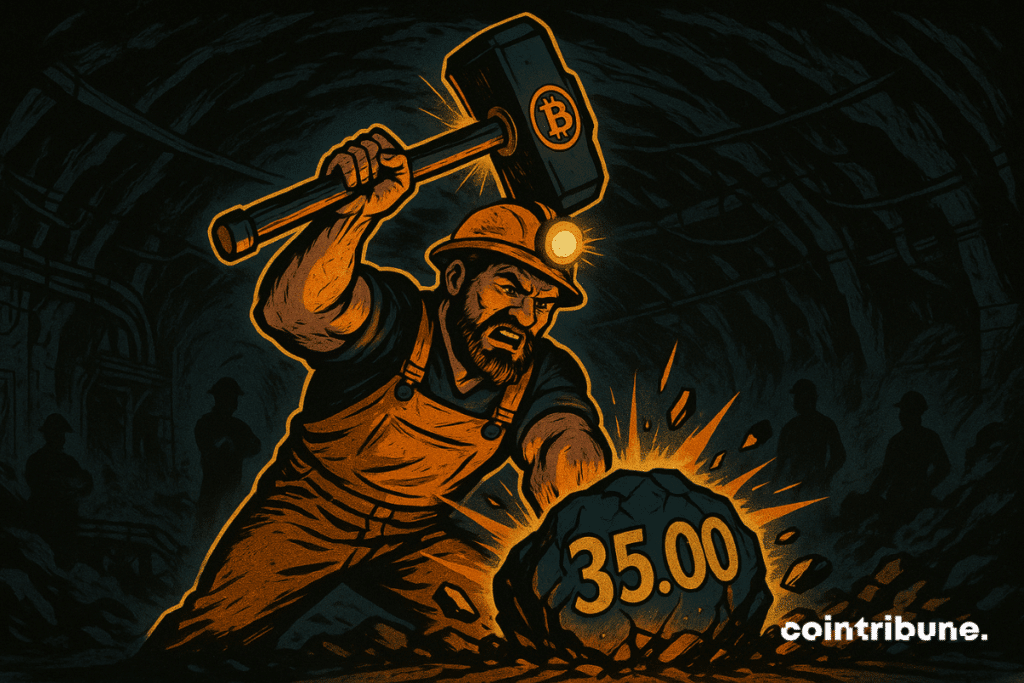Bitcoin’s Network Under Pressure As Onchain Activity Drops
Behind Bitcoin’s apparent stability, an imbalance threatens the network’s sustainability. Since April, transaction fees have dropped by more than 80 %, shaking the remuneration model of mining companies. Amid the rise of ETFs and after a demanding halving, it is Bitcoin’s internal economy that is faltering. Lower fees, fewer incentives, more risks to protocol security, the crisis is here, structural, and raises a question the ecosystem can no longer ignore.

In Brief
- Bitcoin transaction fees have collapsed by more than 80 % since April, undermining miners’ economic model.
- Nearly 15 % of blocks are now mined with almost zero fees, weakening incentives to secure the network.
- Onchain activity is slowing sharply, with half-full blocks and a marked decline of uses like Ordinals or Runes.
- Facing this structural crisis, BTCfi, Bitcoin-native decentralized finance, emerges as a possible solution.
The Fee Market Collapse
Since the April 2024 halving, the block reward was halved to 3.125 BTC, while emotions take over the Bitcoin market. To maintain network security, the protocol now relies much more on transaction fees as economic incentives for mining specialists.
However, this mechanism is experiencing a sharp drop. According to the Galaxy Digital report, transaction fees have plunged by more than 80% since April, directly threatening the financial viability of mining activity.
The data is worrying :
- Nearly 15 % of blocks are now mined almost for free, meaning with fees of one satoshi per vByte or less ;
- The mempool capacity remains largely underused, a sign of a network struggling to attract on-chain activity ;
- About 50 % of recent blocks are not even full, a historic low level reflecting a sharp fall in demand;
- The enthusiasm for Ordinals and Runes, which had caused an explosion of OP_RETURN transactions, has collapsed : these now represent only 20 % of daily volume, compared to more than 60 % at their 2024 peak ;
- Spot Bitcoin ETFs, now widely adopted, have absorbed more than 1.3 million BTC, causing a volume shift to offchain structures that generate no fees for mining professionals ;
- Meanwhile, alternative blockchains like Solana attract high-frequency uses, notably memecoins or NFTs, further diverting transactional activity away from Bitcoin.
This combination of a severe halving, fee collapse, activity downturn, and migration to alternatives is putting unprecedented pressure on Bitcoin’s economy. The central question remains: under these conditions, will mining companies still have an interest in securing the network in the long term?
BTCfi, a Bet on the Future or a Simple Mirage ?
Facing this fee crisis, some see in the rise of BTCfi, Bitcoin-native decentralized finance, a potential solution.
Unlike Ethereum or Solana, where DeFi relies on internal smart contracts, BTCfi directly uses Bitcoin as the underlying asset.
“Every BTCfi action requires moving bitcoins”, emphasizes Pierre Samaties, operations director at Dfinity Foundation. This movement triggers computations, which consume block space, and this space has a cost. In other words, the more BTCfi applications are used, the higher the fees generated on the network.
Julian Mezger, marketing director at Liquidium, stresses that Bitcoin’s infrastructure has profoundly evolved in recent years. “In five years, it has gone from a simple settlement protocol to a multi-layered ecosystem”, he believes.
This transformation would lay the foundation for a DeFi native to Bitcoin, capable of supporting lending, exchange, or yield generation activities while boosting on-chain activity. If this trajectory is confirmed, Bitcoin could transcend its traditional role as digital gold to become a foundational financial infrastructure, that is, an essential and programmable building block of decentralized financial systems.
Maximize your Cointribune experience with our "Read to Earn" program! For every article you read, earn points and access exclusive rewards. Sign up now and start earning benefits.
Diplômé de Sciences Po Toulouse et titulaire d'une certification consultant blockchain délivrée par Alyra, j'ai rejoint l'aventure Cointribune en 2019. Convaincu du potentiel de la blockchain pour transformer de nombreux secteurs de l'économie, j'ai pris l'engagement de sensibiliser et d'informer le grand public sur cet écosystème en constante évolution. Mon objectif est de permettre à chacun de mieux comprendre la blockchain et de saisir les opportunités qu'elle offre. Je m'efforce chaque jour de fournir une analyse objective de l'actualité, de décrypter les tendances du marché, de relayer les dernières innovations technologiques et de mettre en perspective les enjeux économiques et sociétaux de cette révolution en marche.
The views, thoughts, and opinions expressed in this article belong solely to the author, and should not be taken as investment advice. Do your own research before taking any investment decisions.